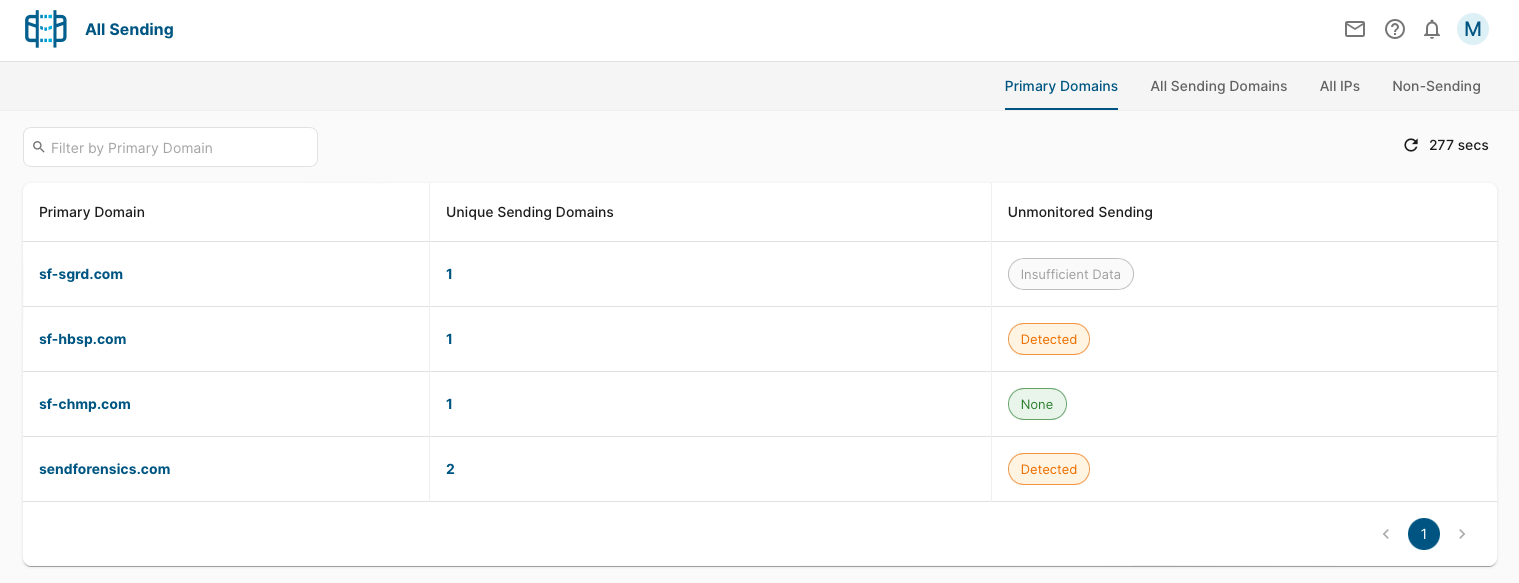Today, we're introducing an improved hierarchical layout with new sender discovery features that puts your domain at the center of deliverability.
Very few companies are aware of the true extent of their outbound email footprint, like how many different systems are sending from how many different sending domains. But why is it so important?
A large part of deliverability is your sender reputation: how inbox providers view you as a sender, based on your emails received over time. Sender reputation is made up of both domain and IP-based reputation. In recent years, domain-centric reputation has largely superseded IP reputation. This is because IPs are easy to change, but your brand’s primary domain is not.
The challenge with domains
All websites start with the primary domain. This is the main URL for your website, like acme.com. This could also be the only domain used for email, or one of many:
- You might use Microsoft 365 for your business email, sending from acme.com
- You might use Salesforce for your CRM, also sending from acme.com
- You might use Zendesk for customer support, sending emails from helpdesk.acme.com
- You might use Mailchimp for marketing campaigns, sending from offers.acme.com
- Transactional emails like order receipts and alerts could be sent from notifications.acme.comx
Collectively, these are called sending domains: any domain you send an email from.
Many businesses use subdomains to isolate email activity and prevent reputation problems from cascading. The theory goes that if something goes wrong with your marketing subdomain, you don't want it to block critical transactional emails like password resets from sending.
Subdomains can mitigate against potential damage, but it is not foolproof — if it were, spammers would just use new subdomains. If too many subdomains have a bad reputation, your primary domain will be impacted.
“The risk is that "maindomain.com" may get filtered if too many subdomains look bad, but that needs to be a risk you accept and manage by maintaining the reputation of all subdomains.” via Spamhaus
As your business grows, you'll likely end up with lots of domains. Some common scenarios:
- A domain for each country: acme.com, acme.fr, acme.br...
- A subdomain for each email activity: news.acme.com, help.acme.com...
- A combination of both: acme.com + secure.acme.com, acme.com + ensecurite.acme.fr
This heady mixture of sending systems, domains and subdomains simultaneously hold their own reputation, contribute to each others’, and impact the overall reputation of the primary domain.
The more complex your domain tree, the harder it is to measure and test deliverability, as no sending domain or sending system should be left out.
SendForensics' new layout
Our improved navigation focuses on the primary domain as a first-order principle. To reflect the impact each sending domain has on overall deliverability as well as its own, all sending domains are shown within a primary domain.
Each SendForensics account can have multiple primary domains:

And each primary domain can have multiple sending domains:
This is a more accurate reflection of how deliverability works across primary domains and sending domains.
Get started
To get started, simply log in to SendForensics or sign up for a trial. You'll see the new look immediately, as well as any automatically identified domains.

